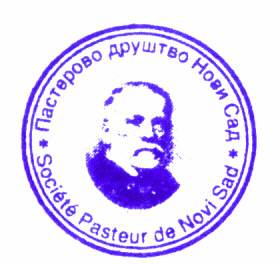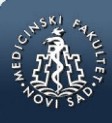md-medicaldata
Main menu:
- Naslovna/Home
- Arhiva/Archive
- Godina 2024, Broj 1
- Godina 2023, Broj 3
- Godina 2023, Broj 1-2
- Godina 2022, Broj 3
- Godina 2022, Broj 1-2
- Godina 2021, Broj 3-4
- Godina 2021, Broj 2
- Godina 2021, Broj 1
- Godina 2020, Broj 4
- Godina 2020, Broj 3
- Godina 2020, Broj 2
- Godina 2020, Broj 1
- Godina 2019, Broj 3
- Godina 2019, Broj 2
- Godina 2019, Broj 1
- Godina 2018, Broj 4
- Godina 2018, Broj 3
- Godina 2018, Broj 2
- Godina 2018, Broj 1
- Godina 2017, Broj 4
- Godina 2017, Broj 3
- Godina 2017, Broj 2
- Godina 2017, Broj 1
- Godina 2016, Broj 4
- Godina 2016, Broj 3
- Godina 2016, Broj 2
- Godina 2016, Broj 1
- Godina 2015, Broj 4
- Godina 2015, Broj 3
- Godina 2015, Broj 2
- Godina 2015, Broj 1
- Godina 2014, Broj 4
- Godina 2014, Broj 3
- Godina 2014, Broj 2
- Godina 2014, Broj 1
- Godina 2013, Broj 4
- Godina 2013, Broj 3
- Godina 2013, Broj 2
- Godina 2013, Broj 1
- Godina 2012, Broj 4
- Godina 2012, Broj 3
- Godina 2012, Broj 2
- Godina 2012, Broj 1
- Godina 2011, Broj 4
- Godina 2011, Broj 3
- Godina 2011, Broj 2
- Godina 2011, Broj 1
- Godina 2010, Broj 4
- Godina 2010, Broj 3
- Godina 2010, Broj 2
- Godina 2010, Broj 1
- Godina 2009, Broj 4
- Godina 2009, Broj 3
- Godina 2009, Broj 2
- Godina 2009, Broj 1
- Supplement
- Galerija/Gallery
- Dešavanja/Events
- Uputstva/Instructions
- Redakcija/Redaction
- Izdavač/Publisher
- Pretplata /Subscriptions
- Saradnja/Cooperation
- Vesti/News
- Kontakt/Contact
 Pasterovo društvo
Pasterovo društvo
- Disclosure of Potential Conflicts of Interest
- WorldMedical Association Declaration of Helsinki Ethical Principles for Medical Research Involving Human Subjects
- Committee on publication Ethics
CIP - Каталогизација у публикацији
Народна библиотека Србије, Београд
61
MD : Medical Data : medicinska revija = medical review / glavni i odgovorni urednik Dušan Lalošević. - Vol. 1, no. 1 (2009)- . - Zemun : Udruženje za kulturu povezivanja Most Art Jugoslavija ; Novi Sad : Pasterovo društvo, 2009- (Beograd : Scripta Internacional). - 30 cm
Dostupno i na: http://www.md-medicaldata.com. - Tri puta godišnje.
ISSN 1821-1585 = MD. Medical Data
COBISS.SR-ID 158558988
VEZA IZMEĐU POROĐAJNE TELESNE MASE I DUŽINE NOVOROĐENČETA, TRAJANJA DOJENJA I POČETAK UVOĐENJA DOPUNSKE ISHRANE, I INDEKSA TELESNE MASE U DETINJSTVU I ADOLESCENCIJI
/
RELATIONSHIP BETWEEN NEWBORN'S BIRTH WEIGHT AND BIRTH LENGTH, DURATION OF BREASTFEEDING AND AGE AT COMPLEMENTARY FEEDING, AND BODY MASS INDEX IN CHILDHOOD AND ADOLESCENCE
Authors
Snežana Panić1, Marijana Srećković1,2, Igor Dragičević1,3
UDK: 572.512-053.2 The paper was received / Rad primljen: 19.11.2020. Accepted / Rad prihvaćen: 22.12.2020. Sažetak indeks telesne mase, dojenje, dopunska ishrana, školska deca Abstract body mass index, breastfeeding, complementary feeding, schoolchildren References:
1Zavod za javno zdravlje Šabac
2Medicinski fakultet, Univerzitet u Novom Sadu
3Fakultet zdravstvenih nauka, Evropski univerzitet „Kallos” Tuzla
Correspondence to:
dr Marijana Srećković
Zavod za javno zdravlje Šabac, Srbija
Jovana Cvijić br.1; 15000 Šabac
kontakt telefon: 063-836-98-98
e-mail: drsreckovicmaja@gmail.com
Veza između porođajne telesne mase i kasnije prekomerne telesne mase (PTM)/gojaznosti nije pouzdano utvrđena. Sugerisano je da isključivo dojenja i starost novorođenčeta u trenutku uvođenja mešovite ishrane imaju umeren zaštitni efekat na PTM dece. Cilj ove studije bio je da istraži vezu između porođajne telesne mase, trajanja dojenja i vremena uvođenja dopunske ishrane, i indeksa telesne mase (ITM) u kasnijem detinjstvu i adolescenciji. Primenili smo studiju preseka među 226 dece osnovnih i srednjih škola iz opštine Šabac, Mačvanski okrug. Analizirani su dečiji medicinski kartoni na telesnu masu (TM) i visinu (TV) i izračunat je ITM za uzrast, z-skor i percentil za decu pomoću Anthro Software Svetske zdravstvene organizacije. Roditelji su popunili upitnik sa osnovnim informacijama o detetu. Statistička analiza podataka je izvršena pomoću SPSS Statistics for Windows, Version 17. Spirman-ova korelacija korišćena je za određivanje korelacije između kontinuiranih podataka, a vrednost p<0,05 se smatra značajnom. Prosečna starost ispitanika bila je 13,3 ± 1,9 godina. U prilagođenim analizama, veća porođajna TM bila je povezana sa većim rizikom od PTM/gojaznosti u dobi od 10-15 godina. Pronašli smo pozitivnu korelaciju između veće porođajne TM i PTM/gojaznosti u adolescenciji (ρ=0,296; p=0,006), trajanja dojenja (ρ=-0,286; p=0,001) i vremena uvođenja mešovite hrana (ρ=-0,348; p=0,01) bili su povezani sa nižim ITM. U našoj studiji je PTM/gojaznost kod dece bila povezana sa većom porođajnom TM. Takođe, ova studija potvrđuje blagotvorno dejstvo dojenja protiv gojaznosti.
Ključne reči:
The association between birth weight and later overweight/obesity has not been reliably established. Exclusive breastfeeding duration and age at complementary feeding have been suggested to have a moderate protective effect on childhood overweight. The purpose of the study was to investigate the relationship between birth weight, duration of breastfeeding and timing of complementary food, and body mass index (BMI) in later childhood and adolescence. We applied a cross-sectional study among 226 primary and secundary school children from municipality of Šabac, Mačva district. Children's medical records were analyzed for body weight (BW) and height (BH), and body mass index for age, z-score, and percentile of children was calculated using World Health Organisation Anthro Software. The parents completed a questionnaire related to basic information about the child. Statistical analysis was performed using SPSS Statistics for Windows, Version 17.0. Spearman correlation analysis methods were used to determine the correlation among continuous data and p-value of <0.05 was considered as significant. The respondents' average age was 13.3 ± 1.9 years. In adjusted analyses, a higher birth weight was associated with a risk for overweight/obesity at 10–15 years of age. We found a positive correlation between the overweight/obesity and height of children’s, and higher birth weight (ρ=0.296; p=0.006). Duration of breastfeeding (ρ=-0.286; p=0.001) and timing of complementary food (ρ=-0.348; p=0.01) are associated with a lower BMI centile. In our study children’s overweight/obesity was associated with higher birth weight. Also, present study confirms the beneficial effect of breastfeeding against obesity.
Key words:
 Medicinski fakultet
Medicinski fakultet